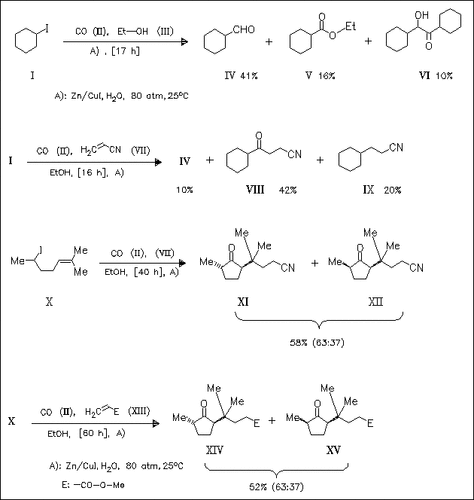ChemInform Abstract: Free-Radical Carbonylation Using a Zn(Cu)-Induced Reduction System.
Abstract
ChemInform is a weekly Abstracting Service, delivering concise information at a glance that was extracted from about 100 leading journals. To access a ChemInform Abstract of an article which was published elsewhere, please select a “Full Text” option. The original article is trackable via the “References” option.
ChemInform Abstract
Carbonylation of organic iodides, such as (I) in the presence of Zn/ CuI is studied. The main product is in general the expected aldehyde. By addition of activated alkenes the coupling products are mainly obtained. Intramolecular alkene trapping affords cyclopentanone derivatives.





